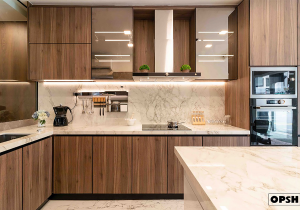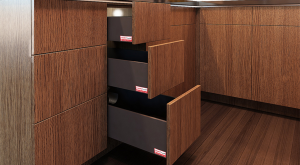Featured Post
How to Childproof Your Home Step-by-Step
Overview:
Childproofing your home is a must to keep your kids safe. This guide walks you through How to Childproof Your Home Step-by-Step, offering practical tips and focusing on safety tips for kids' room furniture—like nightstands for kids' bedrooms and nurseries. Let’s make your home a secure space for your little ones!
Step 1: Spot the Dangers in Your Home
Start by walking through your house with a sharp eye. Look for anything that could hurt a curious child—sharp edges, wobbly furniture, or exposed outlets. In the kids’ room, check the nightstand. Is it steady? Any corners that could bruise? I once found a loose lamp cord dangling from my son’s nightstand—yikes!
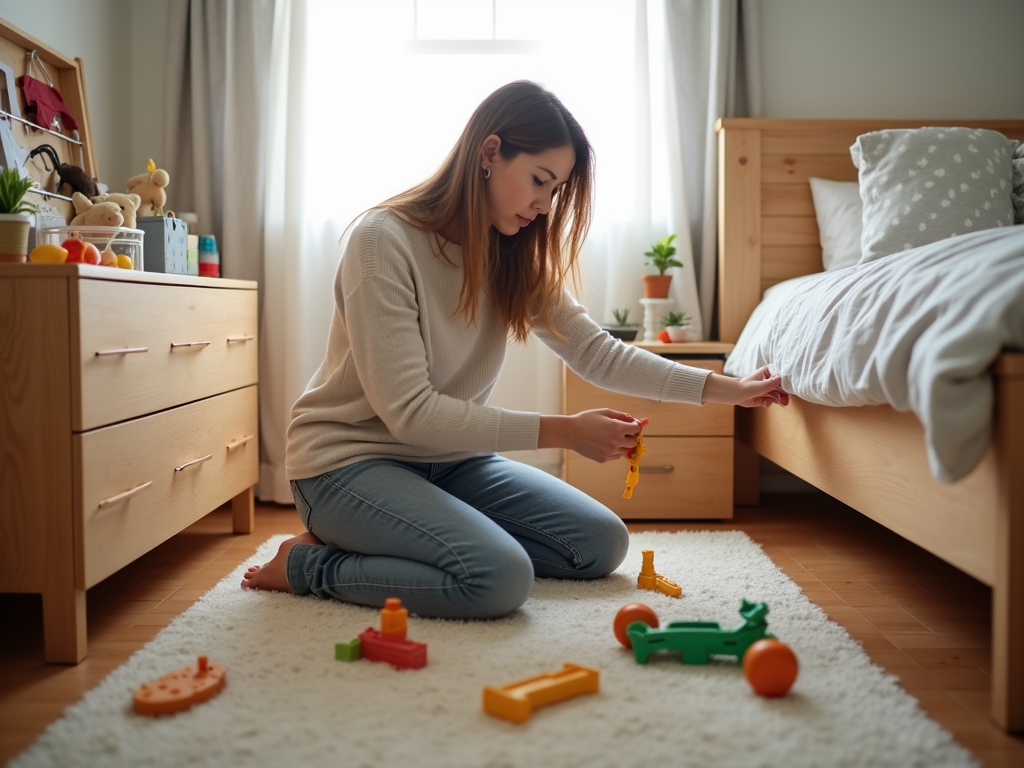
Step 2: Anchor Furniture to Walls
Kids love to climb, and that’s why securing furniture is a game-changer. Use straps or brackets to lock dressers, bookshelves, and even nightstands to the wall. A friend of mine had a close call when her toddler tipped a dresser. Anchoring it saved the day—and maybe more.
Step 3: Pick Safe Kids’ Room Furniture
Choosing the right furniture matters. Go for nightstands for kids' bedrooms and nurseries with rounded edges and non-toxic finishes. I swapped out a rickety old nightstand for one with soft-close drawers. It’s sturdy, safe, and keeps little fingers from getting pinched.
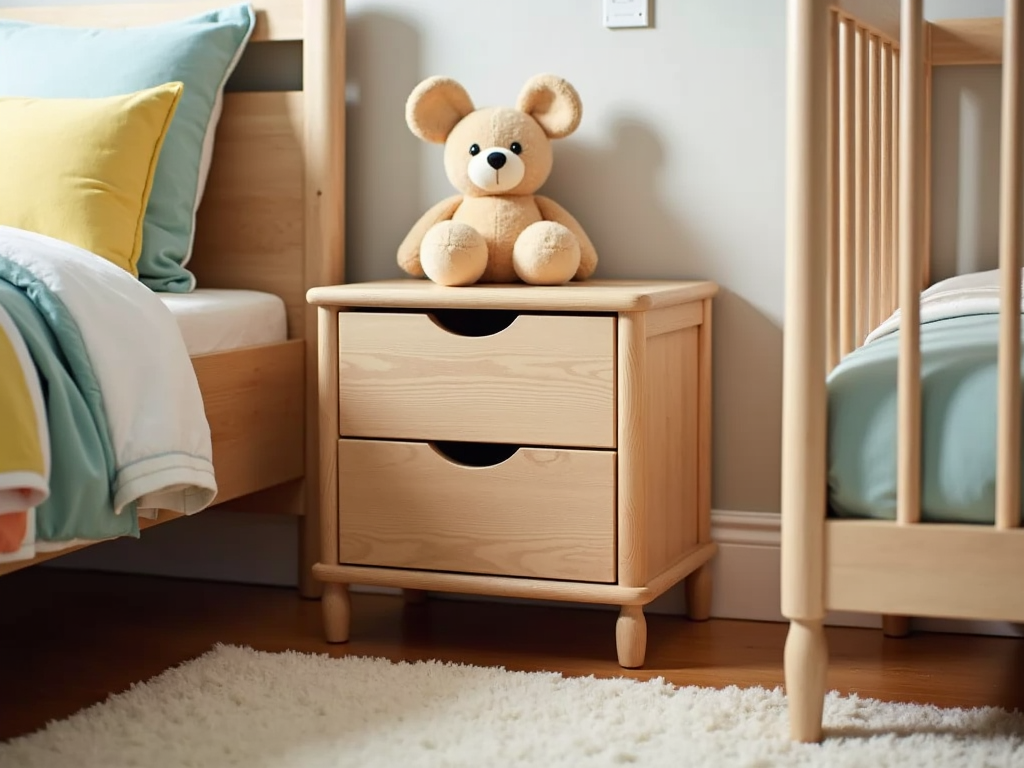
Step 4: Add Gates and Locks
Safety gates block off stairs or risky rooms. Locks keep cabinets and drawers off-limits—think cleaning supplies or meds. In my daughter’s room, I put a lock on her nightstand drawer. It stops her from grabbing small stuff she shouldn’t touch.
Step 5: Hide Electrical Risks
Outlets and cords are magnets for tiny hands. Pop on outlet covers and tuck cords away with winders. On my son’s nightstand, I use a clip to keep the lamp cord out of reach. It’s a small fix that makes a big difference.
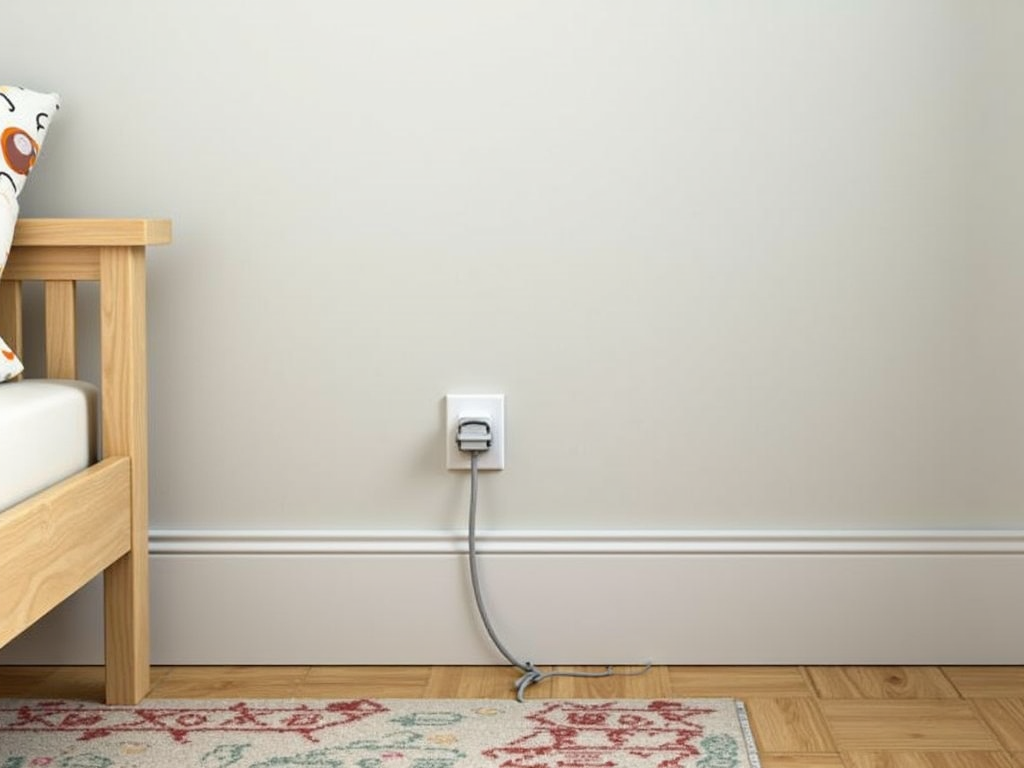
Step 6: Clear Out Small Hazards
Little objects can choke a child in seconds. Scan your home and ditch anything tiny—coins, buttons, you name it. On the nightstand, keep only safe, age-right toys. I learned this the hard way when my kid found a marble I’d missed.
Step 7: Soften Corners and Edges
Sharp corners on furniture are trouble waiting to happen. Add corner guards to tables, dressers, and nightstands. I stuck some on my coffee table after my toddler bumped his head. It’s a cheap fix for peace of mind.
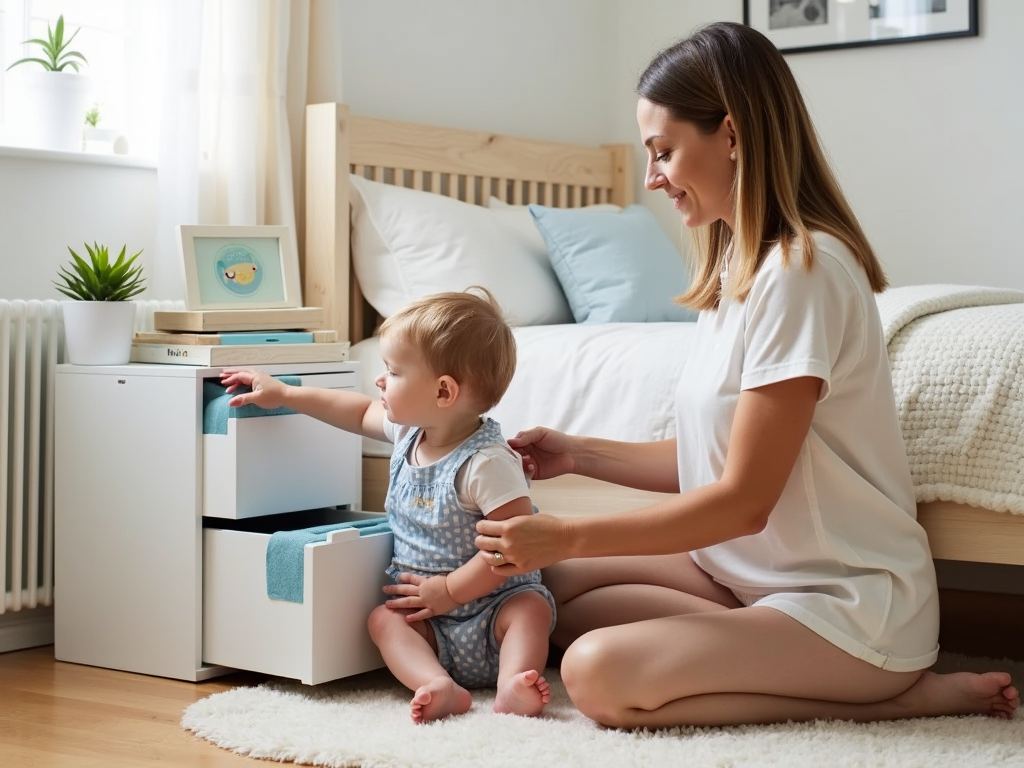
Step 8: Test Your Setup
Once you’ve childproofed, get down to your kid’s level—literally. Crawl around and see what they see. I caught a loose screw on a nightstand this way. Fix anything you missed. It’s like a safety treasure hunt!
Step 9: Teach Your Kids Safety Basics
Locks and gates are great, but teaching helps too. Show your kids why climbing furniture is a no-no or why outlets are off-limits. My three-year-old now yells “Danger!” when she sees a cord. It’s cute—and effective.
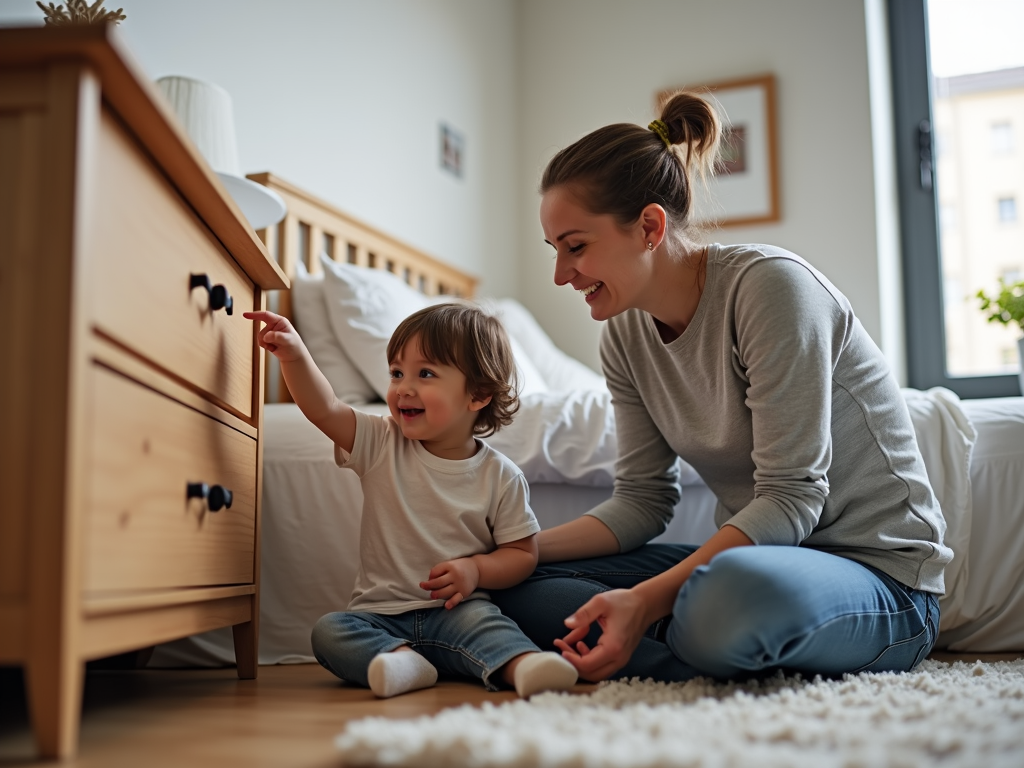
Safety Tips for Kids’ Room Furniture
Here’s a quick checklist:
- Rounded Edges: Avoid cuts and bruises.
- Stable Bases: No tipping risks.
- Non-Toxic Finishes: Safe if chewed.
- Locks: Secure drawers on nightstands.
Pick furniture that grows with your kid. A good nightstand can double as storage and stay safe for years.
Why Nightstands Matter
Nightstands for kids’ bedrooms and nurseries aren’t just decor. They hold lamps, books, or a cup of water—stuff kids need close. But a wobbly nightstand or one with sharp edges? That’s a hazard. I found one with a low, wide base and love how it fits her room safely.

A Real-Life Example
Last year, I helped my sister childproof her place. We anchored every piece of furniture, added locks, and swapped her old nightstand for a safer one. Her son’s now two and thriving—no accidents yet. It took a weekend, but it was worth every second.
Resources That Help
Check out the Consumer Product Safety Commission for anchoring tips or Safe Kids Worldwide for more on childproofing. These sites back up what works with solid advice.
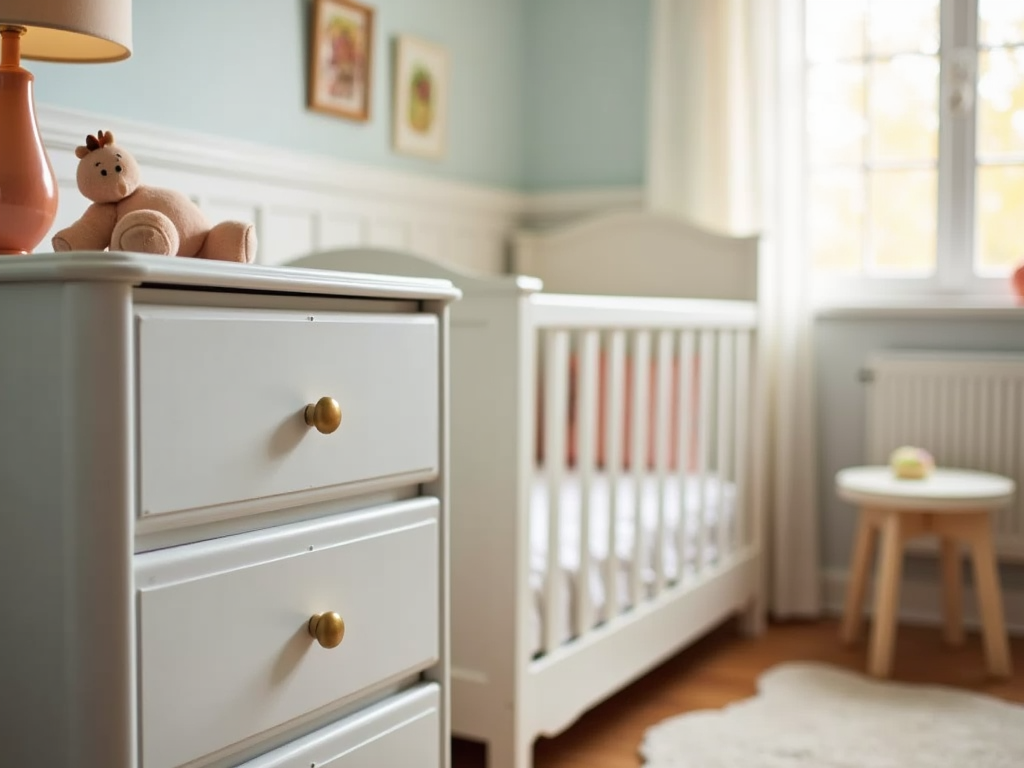
Summary:
Childproofing your home step-by-step keeps your kids safe and your mind at ease. From securing furniture to picking the right nightstands for kids’ bedrooms and nurseries, every move counts. Start today—your little explorers deserve a secure home to grow in.




